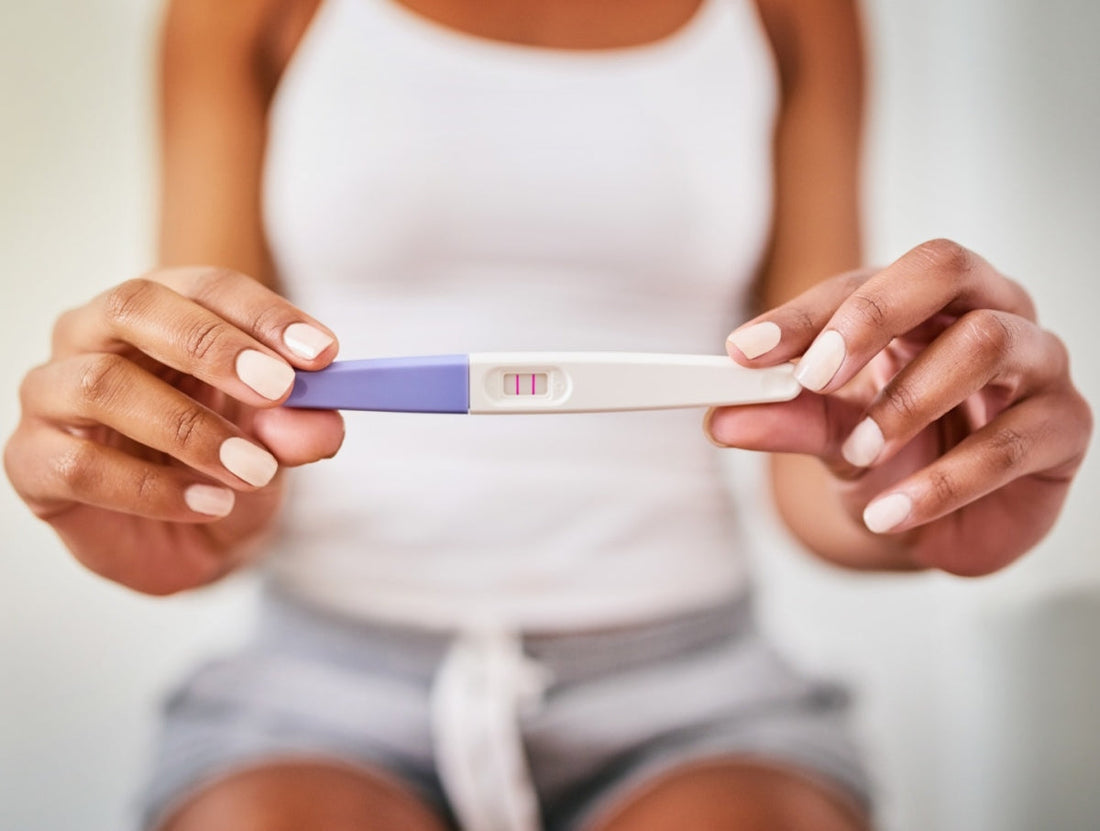
"Forever Chemicals" and Fertility: How PFAS Could Be Impacting Your Journey to Parenthood
Share
PFAS, or per- and polyfluoroalkyl substances, have earned the nickname "forever chemicals" because they persist in the environment and the human body. These synthetic compounds, used in everything from nonstick cookware to waterproof fabrics and food packaging, are practically everywhere — and research suggests they could be playing a hidden role in fertility struggles.
How PFAS Impact Fertility
-
Hormone Disruption: PFAS can interfere with hormones critical for reproduction, like estrogen and progesterone. This disruption may make it harder for women to ovulate, maintain a healthy pregnancy, or regulate their menstrual cycle.
-
Egg and Sperm Quality: Studies show that women with high PFAS levels often have fewer eggs, which can reduce natural conception chances and impact success rates in fertility treatments like IVF. Men are not spared either; PFAS exposure has been linked to lower sperm count, poor motility, and reduced overall quality.
-
Pregnancy Risks: PFAS aren’t just a threat to conception. Exposure has also been associated with higher rates of miscarriage, preterm births, and low birth weights, raising concerns about its impact throughout pregnancy.
Everyday Sources of PFAS Exposure
PFAS are so widespread that avoiding them entirely is almost impossible. Common sources include:
-
Contaminated Drinking Water: Many water supplies around the world have detectable PFAS levels.
-
Nonstick Cookware: Teflon and similar coatings can release PFAS over time, especially when overheated.
-
Food Packaging: Grease-resistant wrappers, takeout containers, and microwave popcorn bags often contain PFAS.
-
Household Products: Stain-resistant carpets, water-repellent clothing, and certain cleaning products are all culprits.
-
Personal Care Items: Waterproof makeup and sunscreens may also include PFAS.
Steps to Protect Your Fertility
While eliminating PFAS exposure completely may be unrealistic, you can take steps to minimize your risk:
-
Filter Your Water: Invest in a high-quality reverse osmosis or activated carbon filter specifically designed to remove PFAS.
-
Ditch Nonstick Pans: Switch to safer options like stainless steel, cast iron, or ceramic cookware.
-
Be Label-Savvy: Avoid products marketed as “stain-resistant,” “waterproof,” or “grease-proof,” as they likely contain PFAS.
-
Choose Fresh Over Packaged: Cooking at home with fresh ingredients can help you avoid PFAS-laden food packaging.
-
Stay Informed: Check your local water supply’s PFAS levels and advocate for stricter environmental regulations.
Hope Through Awareness
PFAS are an invisible threat to fertility, but awareness is the first step toward change. Understanding the risks and taking small, actionable steps can help protect your reproductive health. For those already facing fertility challenges, consulting a healthcare provider or fertility specialist is essential. Testing for PFAS levels and exploring treatment options could make a difference in your journey to parenthood.
Remember, every small change counts. By reducing your exposure and advocating for a healthier environment, you’re not only protecting yourself but also paving the way for future generations to thrive.
PureFertility by PFAS Guard is a PFAS cleanse for fertility support. If you have concerns about your PFAS exposure, take a look at PureFertility today!
Resources
-
Agency for Toxic Substances and Disease Registry (ATSDR). (2021). Per- and Polyfluoroalkyl Substances (PFAS) and Your Health. Retrieved from https://www.atsdr.cdc.gov/
pfas/index.html -
Environmental Working Group (EWG). (2023). PFAS Contamination in Drinking Water. Retrieved from https://www.ewg.org
-
National Institute of Environmental Health Sciences (NIEHS). (2022). PFAS and Human Health. Retrieved from https://www.niehs.nih.gov
-
Grandjean, P., & Clapp, R. (2015). Perfluorinated Alkyl Substances: Emerging Insights Into Health Risks. New Solutions: A Journal of Environmental and Occupational Health Policy, 25(2), 147-163. https://doi.org/10.1177/
1048291115590506
